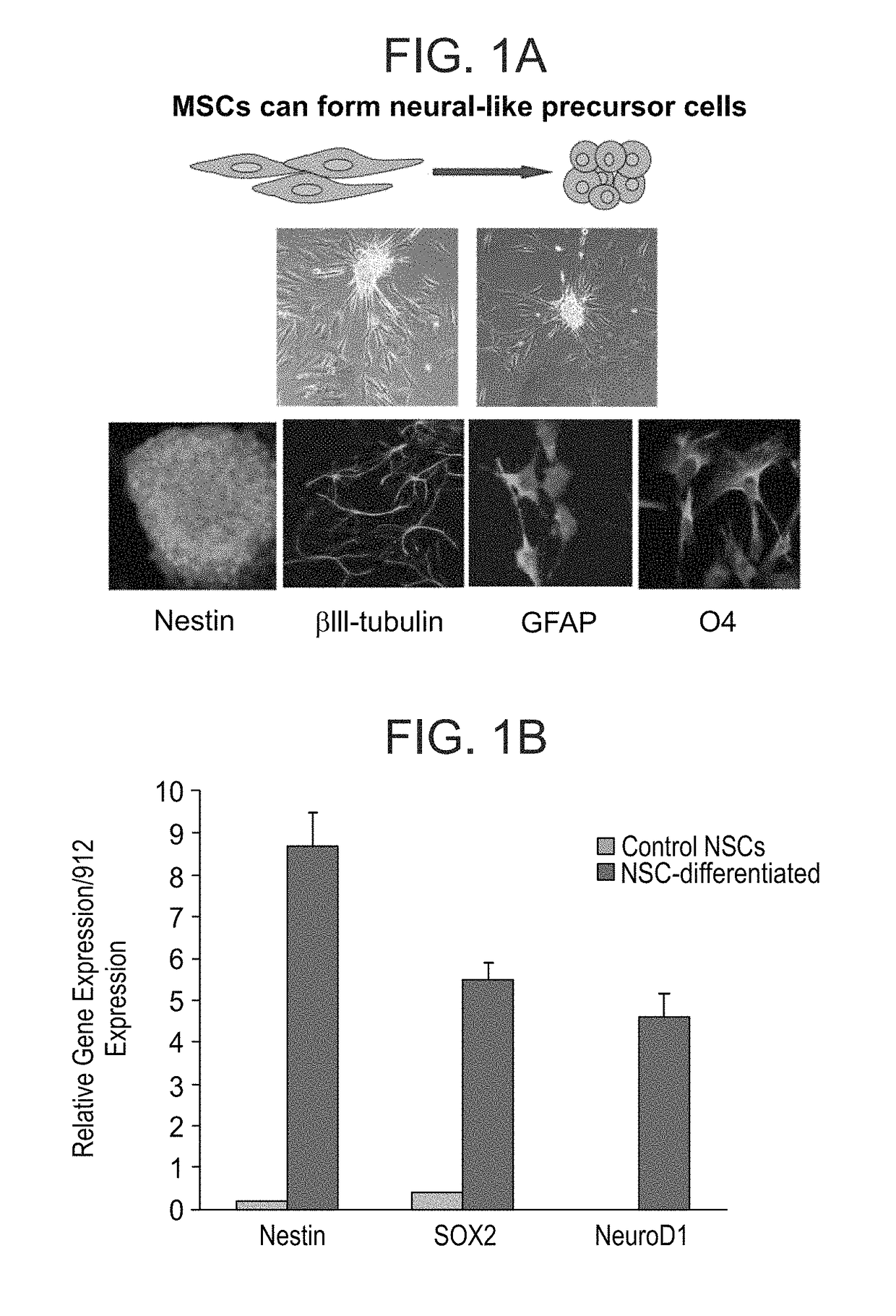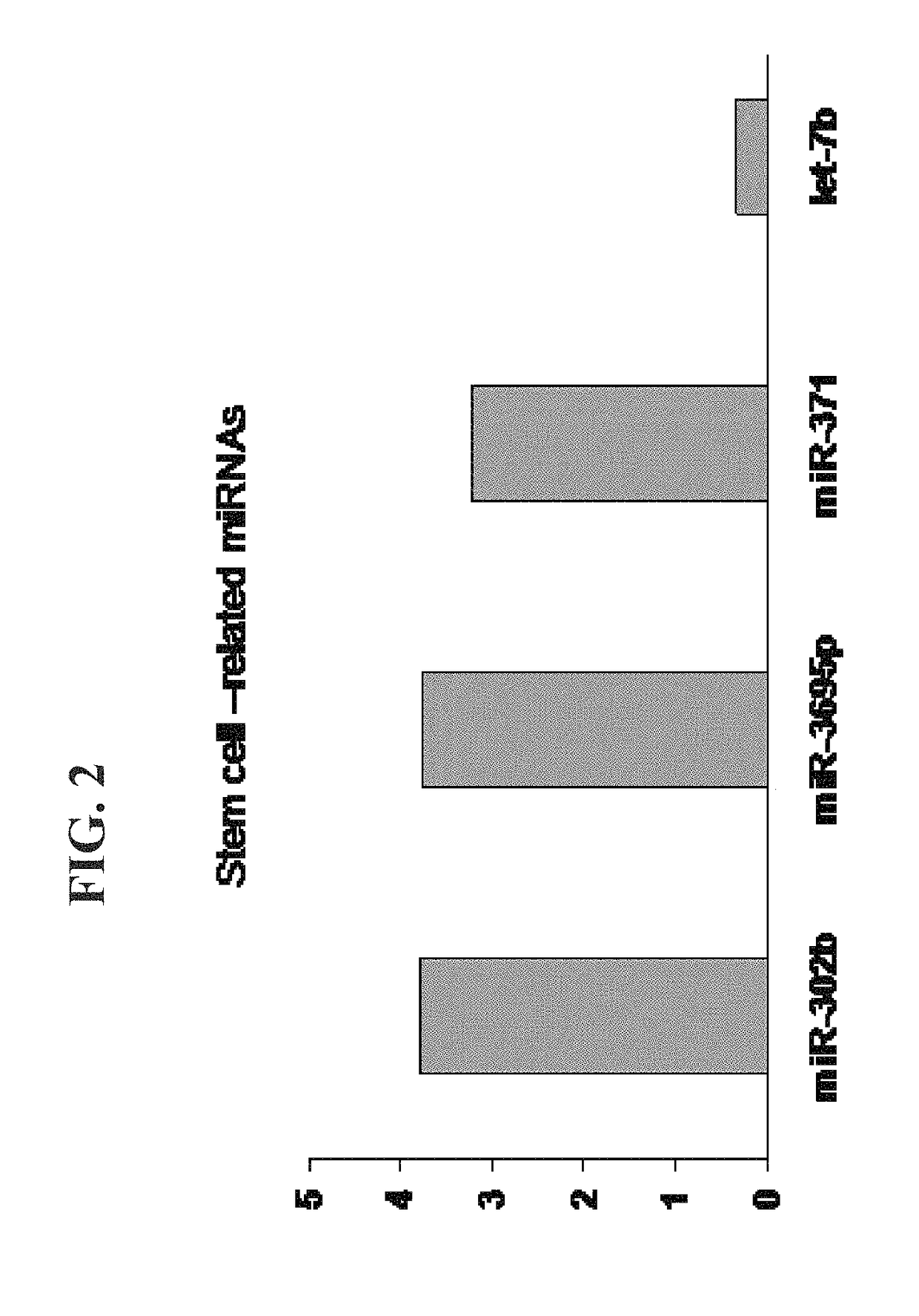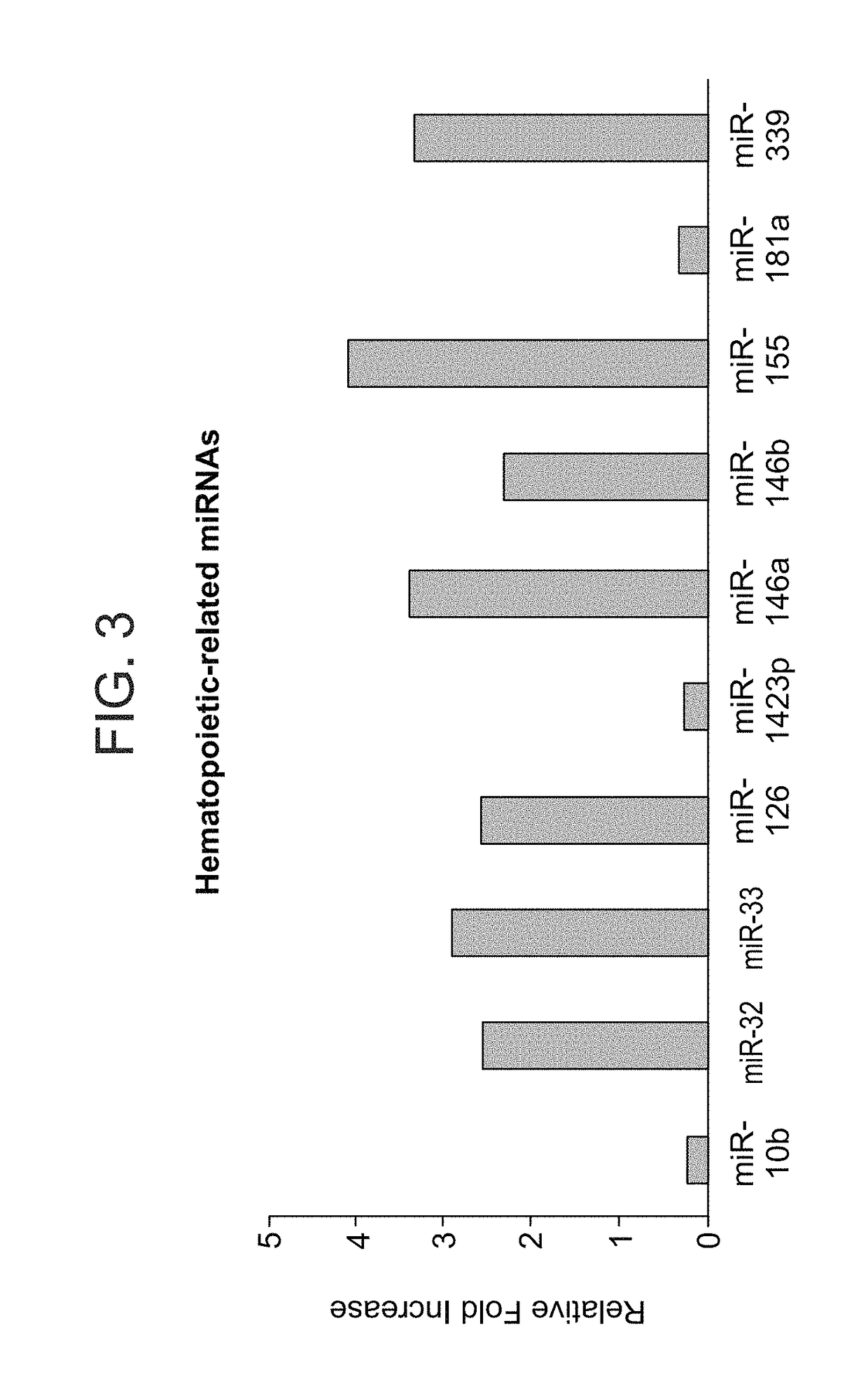Generation of neural stem cells and motor neurons
a technology applied in the field of neural stem cells and motor neurons, can solve the problems of high metabolic rate, affecting the development of neural stem cells, and reducing the ability of neural stem cells to adapt to environmental, genetic, epigenetic,
- Summary
- Abstract
- Description
- Claims
- Application Information
AI Technical Summary
Problems solved by technology
Method used
Image
Examples
example 1
Differentiation of Mesenchymal Stem Cells (MSCs) to Neural Stem Cells (NSCs)
[0323]Methods
[0324]Mesenchymal stem cells (MSCs) from either bone marrow, adipose, placenta or umbilical cord were plated in high density in bacterial dishes in serum free medium supplemented with 10 mg / ml EGF and bFGF for 10 days. The cells started to aggregates and after 4-5 days were disaggregated mechanically to promote their detachment from the plates. The cells were then maintained for two weeks after which they were analyzed for the expression of NSC markers and for their ability to generate neurons, astrocytes and oligodendrocytes when plated on laminin in low-serum (5%) medium.
[0325]The cells were then subjected to miRNA microarray as described.
[0326]Results
[0327]As illustrated in FIGS. 1A-B, the mesenchymal stem cells expressed neuronal markers following neural stem cell differentiation.
example 2
Changes in miRNA Expression During NSC Differentiation
[0328]Materials and Methods
[0329]miRNAs have been shown to play a role in the differentiation of various neural cells and neural stem cells. To analyze the expression and function of specific miRNAs in MSC-derived NSCs, the MSCs were differentiated towards NSCs as described in Example 1 and miRNA array analysis was performed to the control and differentiated cells. A qRT-PCR microarray was run that contained 96 miRNAs, all of which were related to stem cells and that were divided into subgroups based on their known association with stem cells, neural-related, hematopoietic and organ-related miRNAs.
[0330]For analyzing the differential expression of specific miRNA in control and differentiated MSCs, the Stem cell microRNA qPCR array was employed with quantiMiR from SBI company (catalog #RA620A-1), according to the user protocol, the contents of which are incorporated herein by reference. For the qPCR, the Applied Biosystems Power S...
example 3
miRNAs that Play a Role in the Differentiation of MSCs to NSCs
[0345]The present inventors further examined the role of the specific miRNAs that were found to be altered in the miR microarray on the differentiation of the MSCs to NSCs. These experiments were performed by transfecting MSCs with either specific or combination of mature miRNA mimics or miRNA inhibitors and then their ability to generate neurospheres and express the markers nestin and Sox2 was examined.
Results
[0346]It was found that the inhibition of let-7 together with expression of miR-124 increased NSC differentiation.
[0347]In addition, it was found that up-regulation of the following miRNAs: miR302b, miR-371, miR-134, miR-219, miR-154, miR-155, miR-32, miR-33, miR-126 and miR-127 and down-regulation of the following miRs—miR-10b, miR-142-3p, miR-131a, miR-125b, miR-153 and miR-181a either alone or in various combinations induced differentiation of the MSCs to NSCs albeit to different degrees.
[0348]In addition to the ...
PUM
| Property | Measurement | Unit |
|---|---|---|
| real time PCR | aaaaa | aaaaa |
| real time PCR | aaaaa | aaaaa |
| volumes | aaaaa | aaaaa |
Abstract
Description
Claims
Application Information
 Login to View More
Login to View More - R&D
- Intellectual Property
- Life Sciences
- Materials
- Tech Scout
- Unparalleled Data Quality
- Higher Quality Content
- 60% Fewer Hallucinations
Browse by: Latest US Patents, China's latest patents, Technical Efficacy Thesaurus, Application Domain, Technology Topic, Popular Technical Reports.
© 2025 PatSnap. All rights reserved.Legal|Privacy policy|Modern Slavery Act Transparency Statement|Sitemap|About US| Contact US: help@patsnap.com



